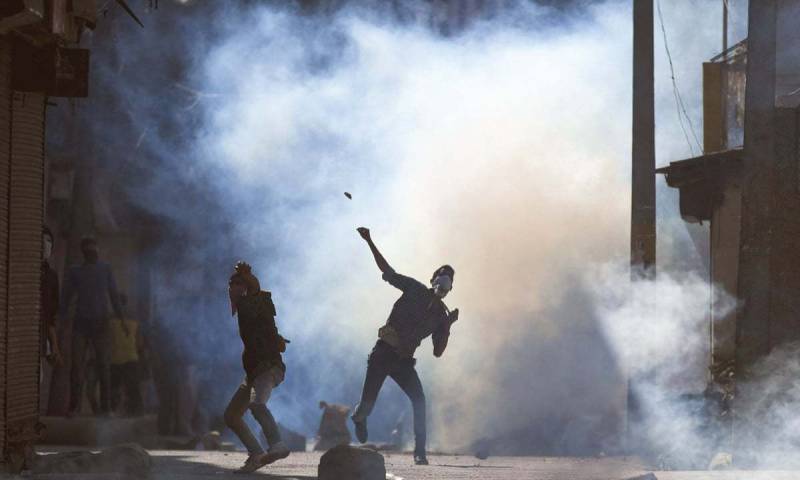Two weeks have passed since the murder of Burhan Wani, but there is still no sign of the unrest abating in Indian-Held Kashmir (IHK). Official (Indian) numbers of the death toll of civilians currently stand at 46, with over 2000 injured. These injuries include complete, partial or temporary blindness from the pellet guns used by the state and permanent disfiguration, and the images of children with the damage to their faces propping up on social media are devastating to see.
Implementing curfews, locking up the intelligentsia, and not allowing for any map but the officially sanctioned one are not random incidents of violence carried out by the Indian state, but carefully planned mechanisms to shift the status quo ever so slightly, in a way that allows for less struggle by the Kashmiri people. The Indian law that states the all maps in India must feature all of Kashmir as part of the country (with a punishment of a maximum prison sentence in the event of a failure to do so) is not merely a vanity quest for the Indian state, but a carefully planned narrative change; the Indian state seems to think that if it keeps pretending that all of Kashmir belongs to it, slowly but surely, people will start to believe it, as will the international community.
The Kashmiri people will not, and Pakistan will not; but this it already knows. The objective is to keep Kashmir away from the international spotlight, to let the international community convince itself that Kashmir belongs to India, so that when Pakistan makes noise, it has years of the ‘it is ours, because our maps say so’ rhetoric on its side.
The latest allegation comes in the form of India’s attempt to resettle Kashmir, to change the demographics, in a way that the Muslims no longer stay a majority in the region. Of course, if this were to change, the vote might just swing in favour of the Indian state. Which is why it is so important to let the people of Kashmir decide sooner rather than later, for even if the Indian state was not actively trying to change the demographic, time does so anyway.
Indeed, it is testament to the Kashmiri struggle that it continues to be just as strong today even after every attempt by India to take away from it. The people of IHK have spent years fighting against Indian rule, and it is time we let them decide what they want. While a negotiated settlement is something both countries might agree to eventually, the will of the Kashmiri people trumps what Pakistan and India want. Whichever side they choose, or even if they decide not to choose either, the real will of the Kashmiri people should be realised sooner rather than later, and that can be only unravelled through an impartial plebiscite.






